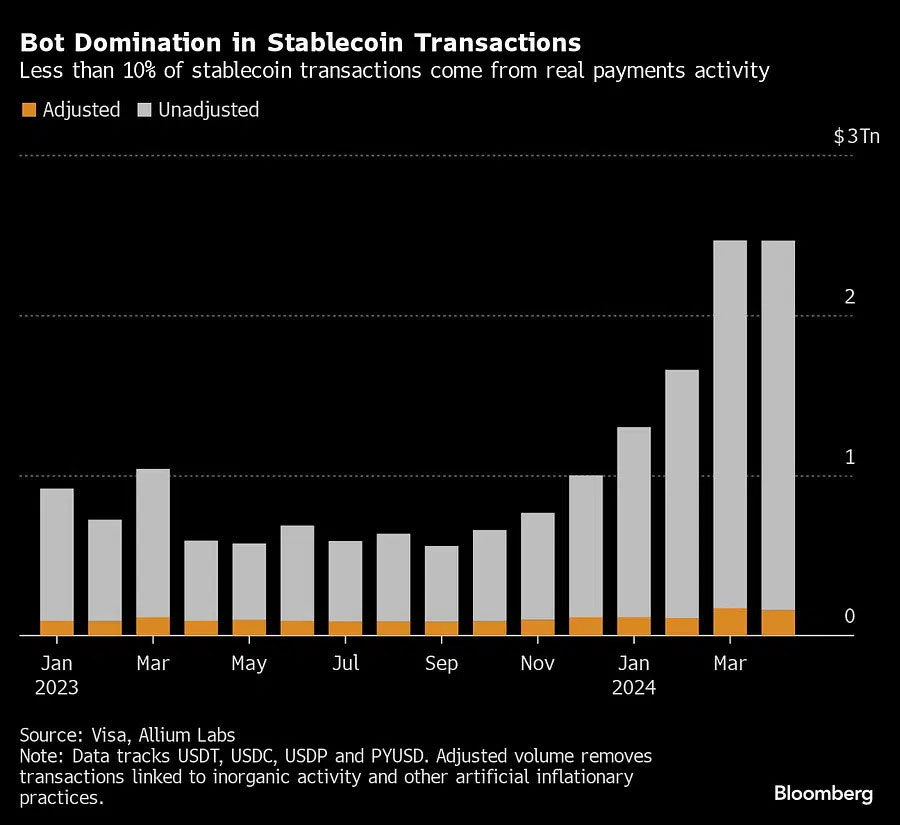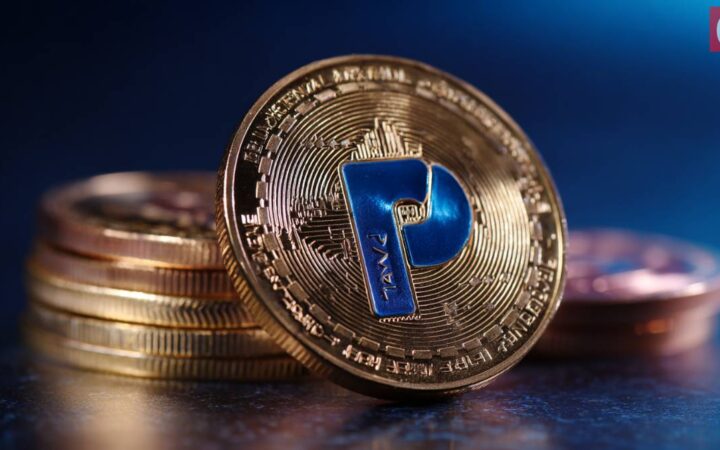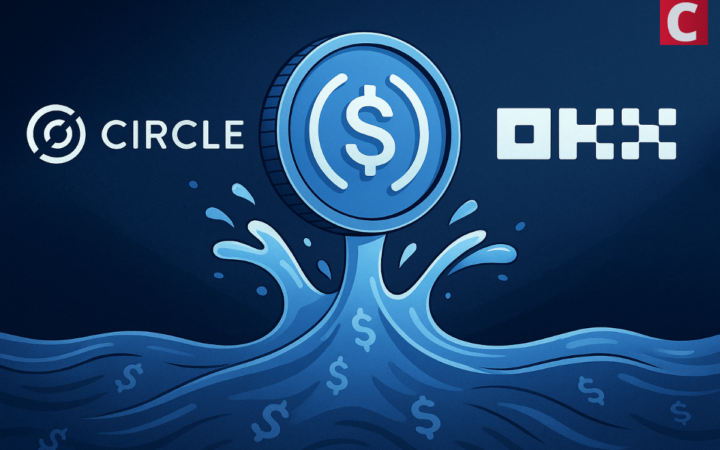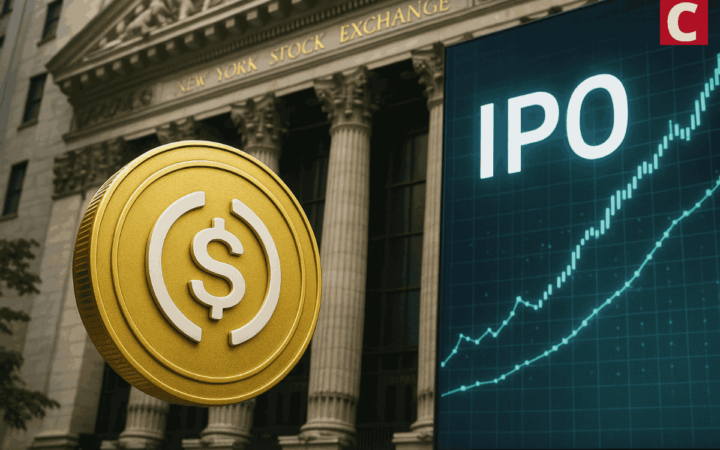
With over 3 years of crypto writing experience, Bena strives to make crypto, blockchain, Web3, and fintech accessible to all. Beyond cryptocurrencies, Bena also enjoys reading books in her spare time.
Visa’s metric filters out bot-driven and high-volume trader transactions, revealing that only $149 billion of $2.2 trillion in stablecoin transactions were from genuine user activity.
 Edited by Julia Sakovich
Updated
3 mins read
Edited by Julia Sakovich
Updated
3 mins read

In a surprising report from Bloomberg, Visa and Allium Labs’ recent study challenges the notion that stablecoins are poised to transform the global payments landscape. The report suggests that a startling 90% of stablecoin transactions in April 2024 did not originate from regular consumers, casting doubt on their potential as a mainstream payment method.

Photo: Visa, Allium Labs
Visa’s metric seeks to isolate “organic payments activity” by filtering out transactions driven by bots and high-volume traders. This revealed that only $149 billion out of a total of $2.2 trillion in stablecoin transactions stemmed from genuine user activity.
“It says that stablecoins are still in a very nascent moment in their evolution as a payment instrument, […] That’s not to say that they don’t have long-term potential, because I think they do. But the short-term and the mid-term focus needs to be on making sure that existing rails work much better,” said Pranav Sood, executive general manager for EMEA at payments platform Airwallex.
The lack of real-world use isn’t shocking. Tracking the actual worth of crypto transactions via blockchain data has always been challenging. Data firm Glassnode estimates the record $3 trillion market cap for digital tokens in the 2021 bull run was likely closer to $875 billion.
Double-counting of transactions further complicates the matter. Swapping funds between different stablecoins on decentralized exchanges like Uniswap can inflate the total volume. For instance, exchanging $100 of USDC (from Circle) for PYUSD (offered by PayPal) on Uniswap would register as $200 in total stablecoin activity, according to Cuy Sheffield, Visa’s head of crypto.
Established payment giants like Visa, which handled over $12 trillion in transactions last year, have a stake in preserving the current state. However, Bernstein analysts believe the total value of all stablecoins could surge to a remarkable $2.8 trillion by 2028, a staggering 18-fold increase.
Proponents argue that stablecoins’ near-instant and virtually cost-free transactions make them perfect for disrupting the payments industry. This reasoning has encouraged companies like PayPal (with its PYUSD) and Stripe (it accepts stablecoins) to embrace the technology.
However, Airwallex’s Sood emphasizes the complexity as a major obstacle. Many consumers still find the technology overly complex, he notes. Importantly, checks remain widely used for business transactions in the US, highlighting the gradual adoption of technology in the payments industry.
The future of stablecoins as a common payment option is uncertain. While their disruptive potential is evident, overcoming hurdles like user acceptance and insufficient transparency in transaction data are vital before they can become a true game-changer.
Disclaimer: Coinspeaker is committed to providing unbiased and transparent reporting. This article aims to deliver accurate and timely information but should not be taken as financial or investment advice. Since market conditions can change rapidly, we encourage you to verify information on your own and consult with a professional before making any decisions based on this content.

With over 3 years of crypto writing experience, Bena strives to make crypto, blockchain, Web3, and fintech accessible to all. Beyond cryptocurrencies, Bena also enjoys reading books in her spare time.




